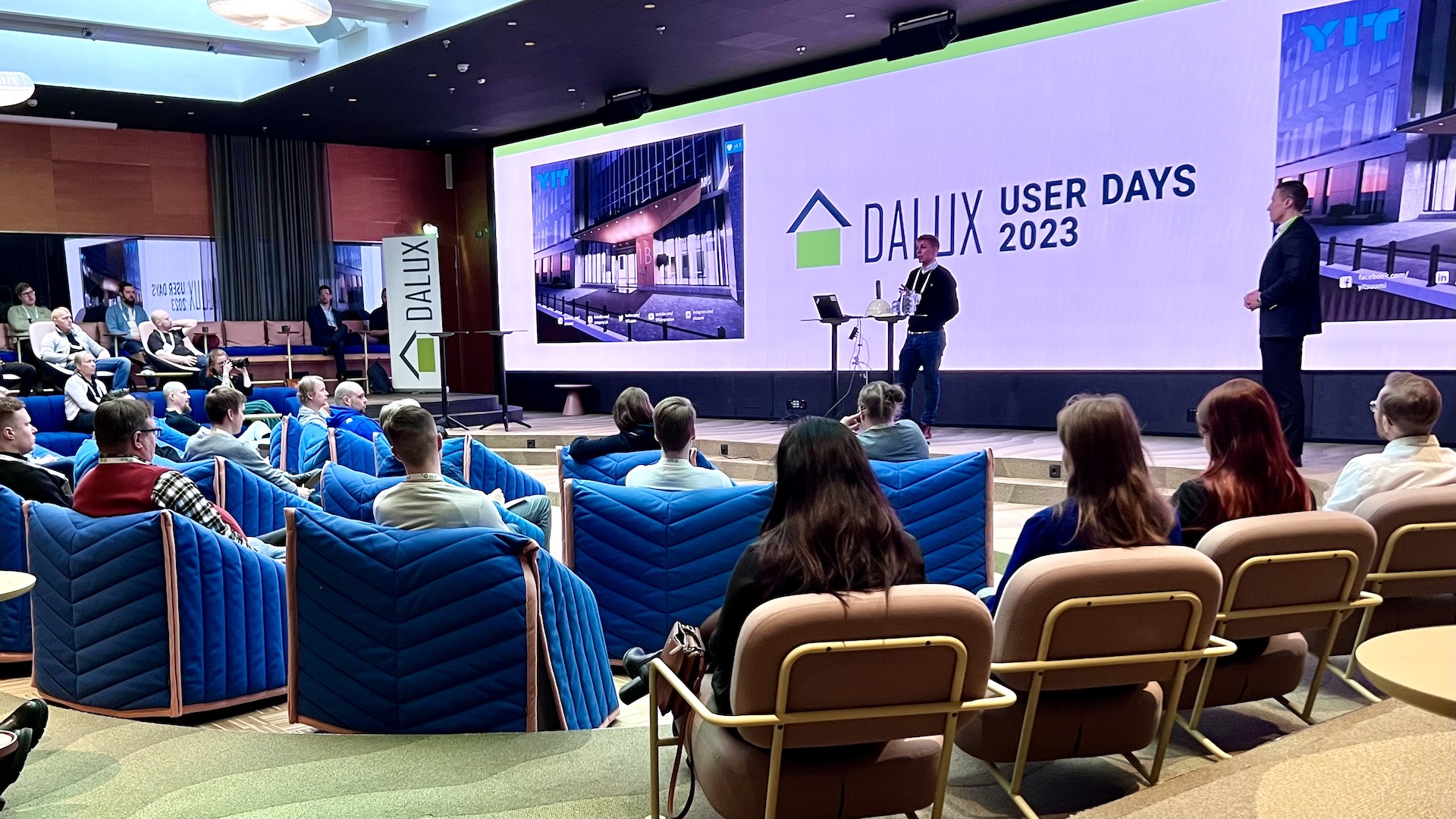I had the pleasure of attending Dalux’s Finnish user day in Helsinki on March 30. The event provided an excellent opportunity to learn how contractors have implemented digital tools and workflows on-site.
Changing the CDE on the run
Hospital projects produce a vast number of documents and BIM models. Having a Common Data Environment (CDE) is necessary, but it should be more than just a method to share files.
Markus Almgren of YIT explained how they had decided to move from an existing CDE to a new platform one year into their hospital project.
What prompted this daring action during a busy project? Markus mentioned three reasons: they needed more organized communication than email, wanted to use automatically updated 3D models for installers, and required a mobile solution.
Markus described how they migrated 12,000 files of over 26 gigabytes with metadata (description, revision, status, date) into Dalux Box Pro. They also had to reinstate access rights to the material.
Luckily, the migration went technically well, and after some training and user support, the new environment is now operational.
Timely quality management
Quality management is another reason to bring digital tools to the site.
Tuomas Aalto of Fira had implemented a concrete element quality management solution. It helps the company and the manufacturers to exchange real-time feedback and accumulate data for continuous improvement.
Peab’s Sabine Hiilloste described the daunting task of trying to be compliant. They used Dalux to make quality planning and inspections less stressful.
Hanna Vieri showed how Ramboll monitors the progress of a water treatment plant project by taking BIM to the site, and Onni Nyström demonstrated STT’s way of doing pre-handover inspections digitally.
Design control
Jukka Rannisto of Haahtela talked about using digital workflows for guiding design during construction. He reminded the audience that we still need 2D drawings extracted from BIM models on the site. The tricky part is how to keep them updated simultaneously.
Finally, Markus Peiponen explained how JM had made a digital way of working part of the everyday. They’ve standardized the use of Dalux and Solibri in residential projects.
What drives the transformation?
Markus Peiponen emphasized the necessity of well-planned communication, internal sponsors, and change agents. But eventually, positive feelings and experiences drive change.
You’ll likely change your habits if you feel you’re now in better control. Several presenters mentioned how the field workers’ buy-in and recommendations from trade contractors were elemental for the transformation.
If digitalization can enhance controllability, predictability, and trust, it will succeed.
View the original article and our Inspiration here


Leave a Reply